- Home
- slideshows
- miscellaneous
- These 7 charts show how brutal the March jobs report was, and signal further economic pain ahead
These 7 charts show how brutal the March jobs report was, and signal further economic pain ahead
The unemployment rate rose by 0.9 percentage points to 4.4%.

A broader measure of unemployment, which includes people out of a job but who are not actively looking for work and people with a part-time job who want to be working full-time, also spiked in March.
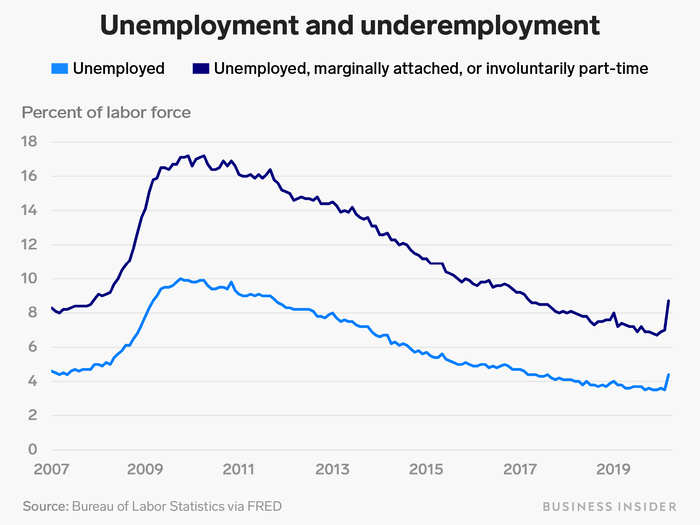
The U6 is a broader measure of employment that includes those unemployed and not actively looking for a job as well as those who are working part-time but would like full-time hours.
The uptick in this measure shows that companies are not only laying off workers as business slows, but are "also taking pretty strong action on ours, particularly in leisure and hospitality," Gimbel said.
The share of adults in their prime working years — aged 25 to 54 — fell at a rate not seen since the Great Recession.
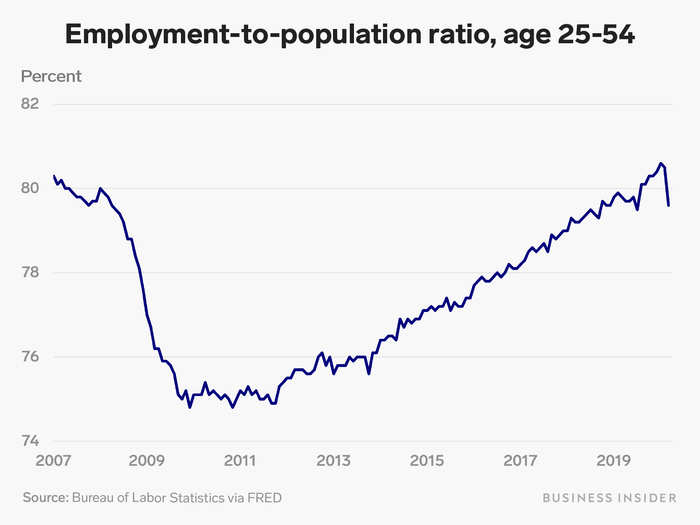
"It's your prime working years right before you might retire and it just plummeted really brutally," Gimbel said.
"Normally economists prefer to look at the prime age employment population ratio because we have an aging population. It's a way of controlling for that demographic," she said.
She continued: "A different way of looking at that is that if you control for demographic differences, we wiped out in one month the entire recovery."
The share of Americans in the labor force — that is, either working or actively looking for work — also sharply declined.
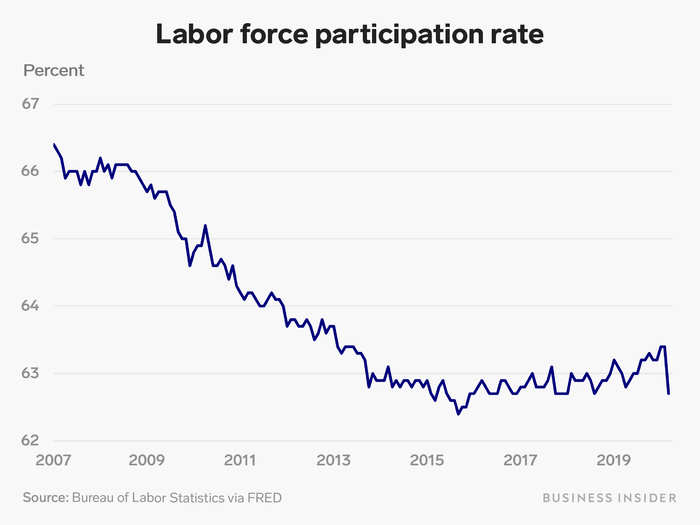
The plunge in the labor force participation rate shows "disengagement in the labor force," Song at Bank of America wrote. The drop is "consistent with workers staying put at home as 'stay-at-home' orders went into effect in March," he said.
Later in the month, those orders to stay at home and practice social distancing were ramped up across many states, meaning that the March report is "an ominous signal of what is to come," Song said.
Based on the monthly survey of employers, the number of jobs in the US fell by 701,000 between February and March, ending a 113-month streak of net job creation.
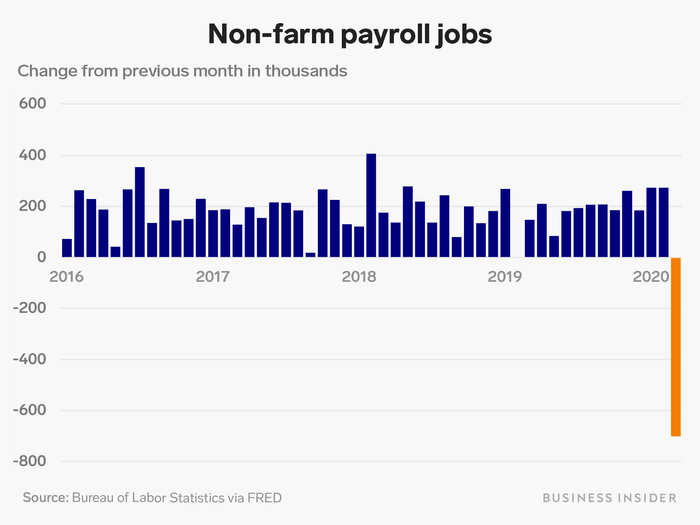
Today's job losses were much wider than the consensus economist estimate that the US economy would lose 100,000 jobs in March, showing the earliest days of the coronavirus pandemic in the country.
The report followed a second week of record layoffs due to the crisis. On Thursday, the Labor Department reported that 6.6 million people filed for unemployment insurance in the week ending March 28, adding to the 3.3 million who filed in the week ending March 21.
This week, there have been "two days of employment releases where the data was so much worse than people were expecting," Gimbel said. "That's just so scary looking forward."
Most sectors were hit hard, but the leisure and hospitality industry lost 459,000 jobs in March.
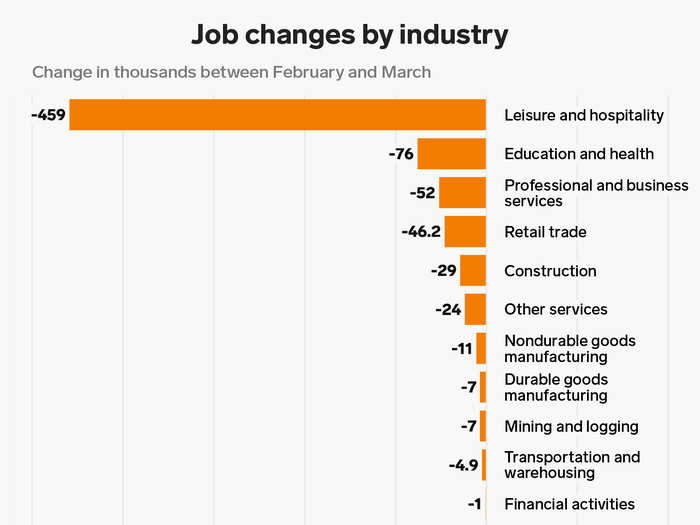
About two-thirds of the overall drop in payroll employment occured in the leisure and hospitality industry, mainly in food services and drinking places, according to the BLS.
Other notable sectors that took a hit were health care and social assistance, professional and business services, retail trade, and construction, according to the report.
Healthcare workers facing layoffs in the coronavirus pandemic is an "unusual feature of the crisis," ZipRecruiter labor economist Julia Pollak told Business Insider. It shows that no sectors are truly recession-proof, she said.
The bulk of the job losses in the hospitality industry came from restaurants and bars.
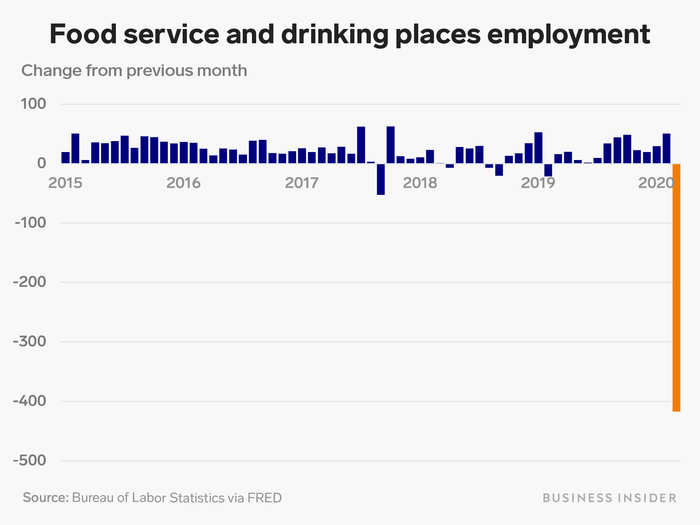
"This was a report that was really about the leisure and hospitality industry," Gimbel said. "We're going to have to wait for the next one to see everyone else get hit."
Despite the March report being out-of-date, "today's data provide some important information about the early days of the labor market crisis we are now in, including which sectors were the very first-affected, most vulnerable sectors," wrote Economic Policy Institute economist Elise Gould, pointing to the losses in leisure and hospitality.
She continued: "Further, both average weekly hours and aggregate weekly hours are down for March, as employers began to reduce hours worked and lay off their staff."
In leisure and hospitality, average weekly hours fell to 24.4 in March from 25.8 in February.
Popular Right Now
Popular Keywords
Advertisement